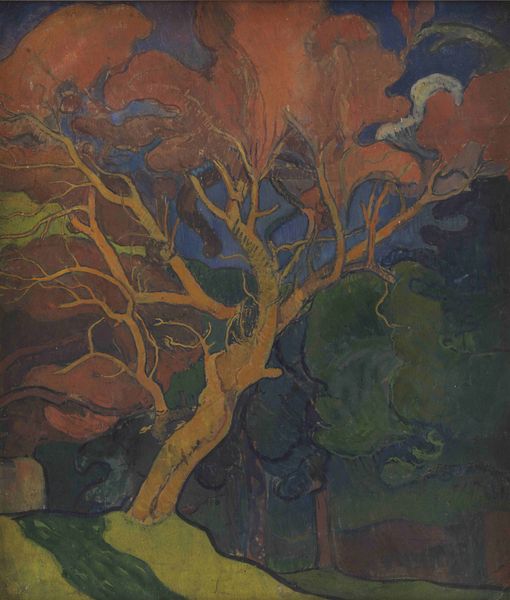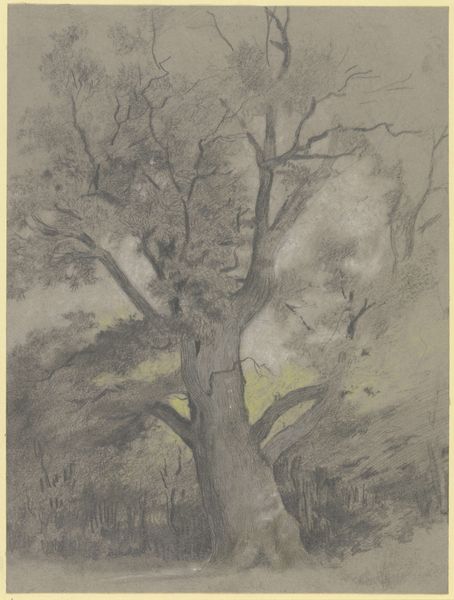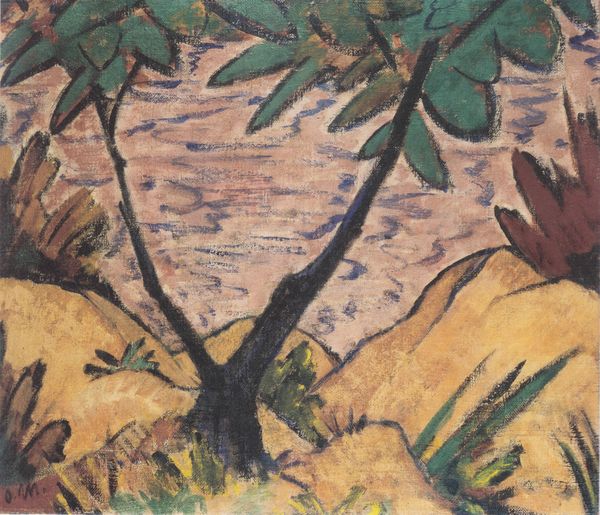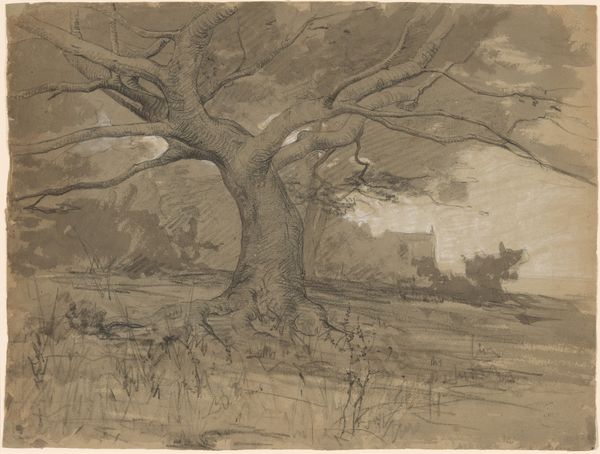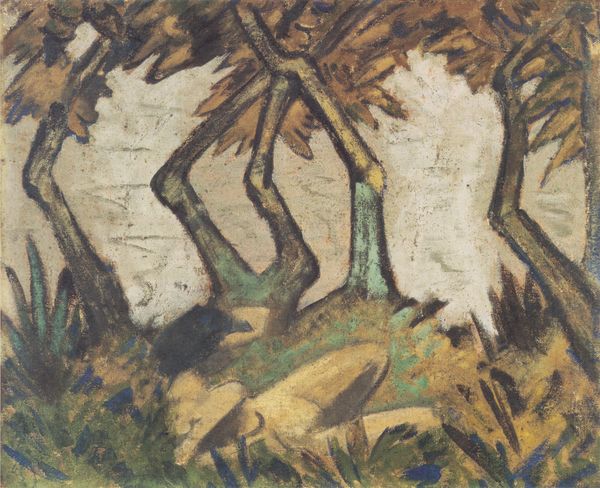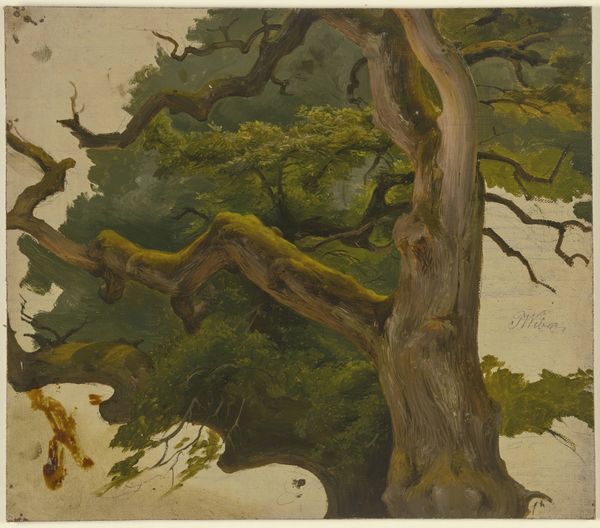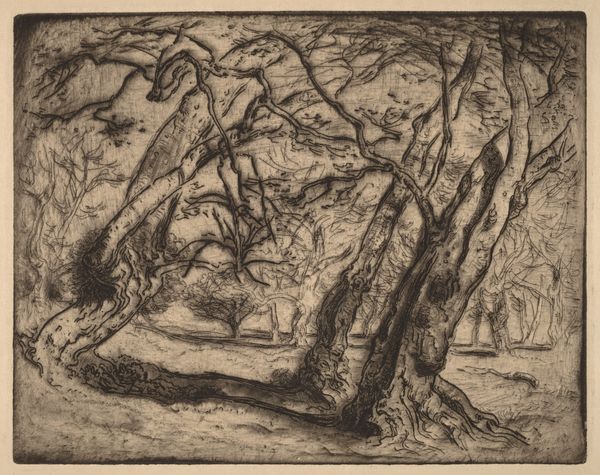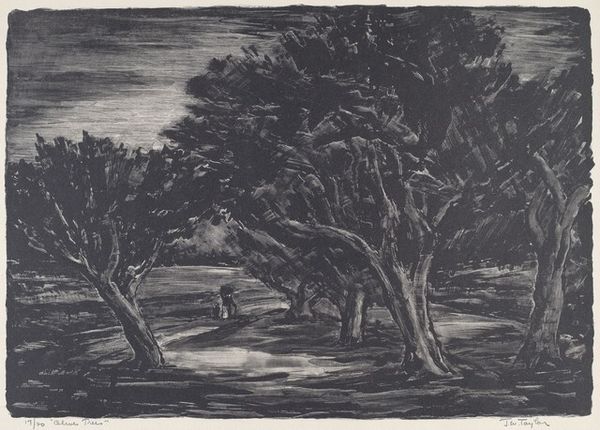
painting, plein-air, oil-paint
#
painting
#
impressionism
#
impressionist painting style
#
plein-air
#
oil-paint
#
landscape
#
oil painting
Copyright: Public domain
Editor: This is "Olive Trees," an oil painting, probably *plein air*, by Konstantinos Maleas. It feels very moody to me, almost brooding with those dark colours. What stands out to you about this piece? Curator: What I see are these ancient trees presented as silent witnesses. Olive trees in Greek culture are laden with symbolic weight; peace, wisdom, and even immortality. Notice how Maleas captures the gnarled, almost human-like quality of the trunks. Does this strike you as familiar? Editor: Hmm, I guess they do feel kind of... present. Like they have seen a lot. I've never thought about olive trees representing immortality before, though. Curator: The symbolism continues in art across millennia. Look at classical depictions of Athena, goddess of wisdom, always with her olive tree. This echoes into Christianity with olive branches representing peace and reconciliation. Maleas, painting in early 20th century Greece, inherits and subtly revives that entire visual language. Editor: That's really interesting. So, it's not just a picture of trees, it's tapping into this whole cultural memory? Do you think viewers at the time would have recognized that? Curator: I believe so. The symbolism was, and largely still is, deeply ingrained. His contemporary audience would see beyond just the impressionistic style; they’d sense the deep historical connection. Today, perhaps, it's more about excavating that meaning, wouldn't you agree? Editor: Definitely, I'm learning that there's way more to unpack in landscape painting than I initially thought! It makes you wonder what other layers are hidden beneath the surface in art. Curator: Indeed! It's about recognizing those threads that connect us to the past.
Comments
No comments
Be the first to comment and join the conversation on the ultimate creative platform.
